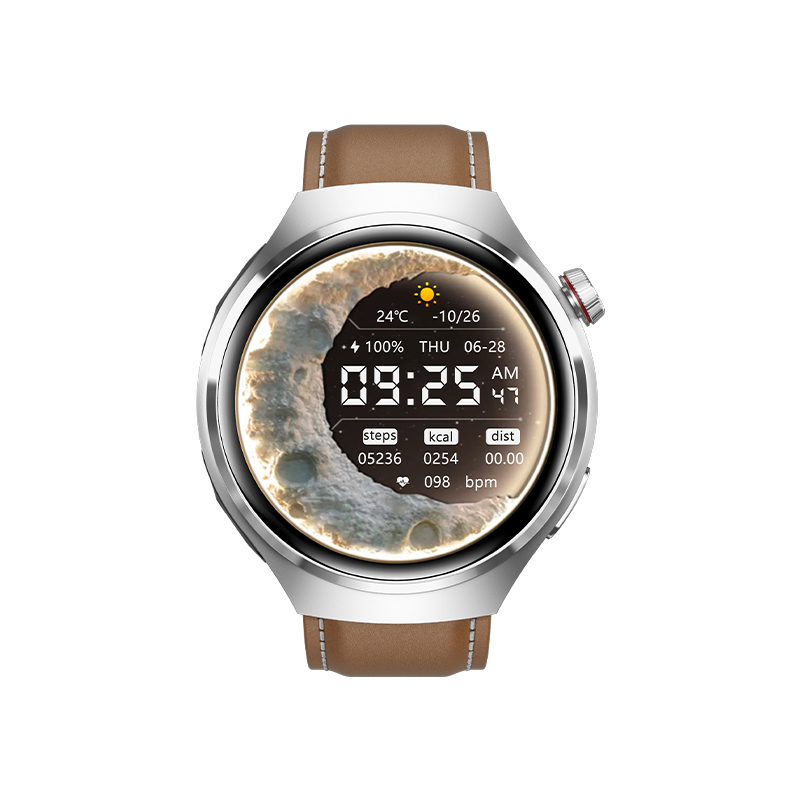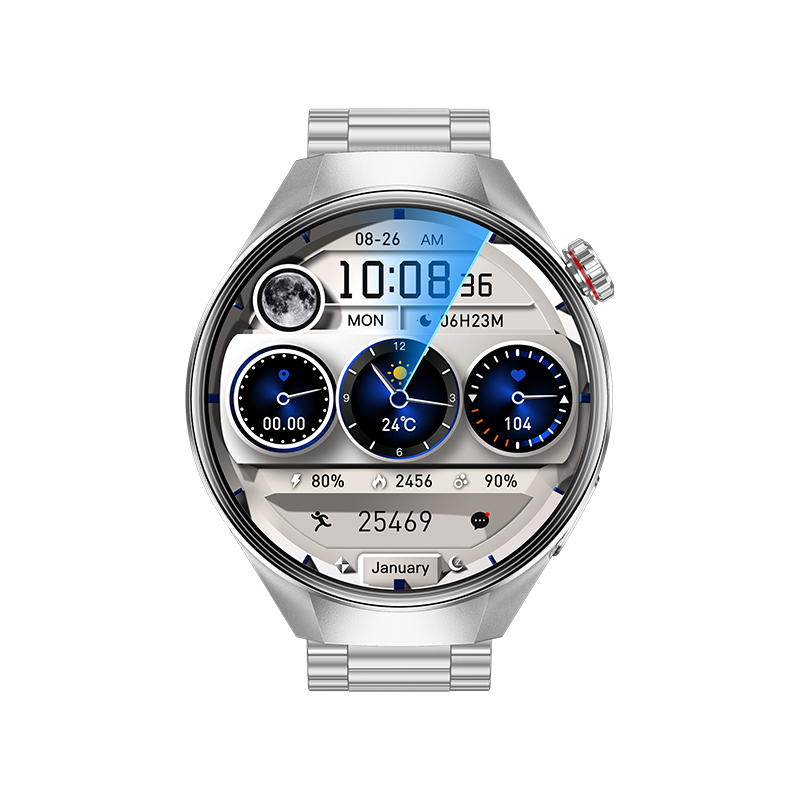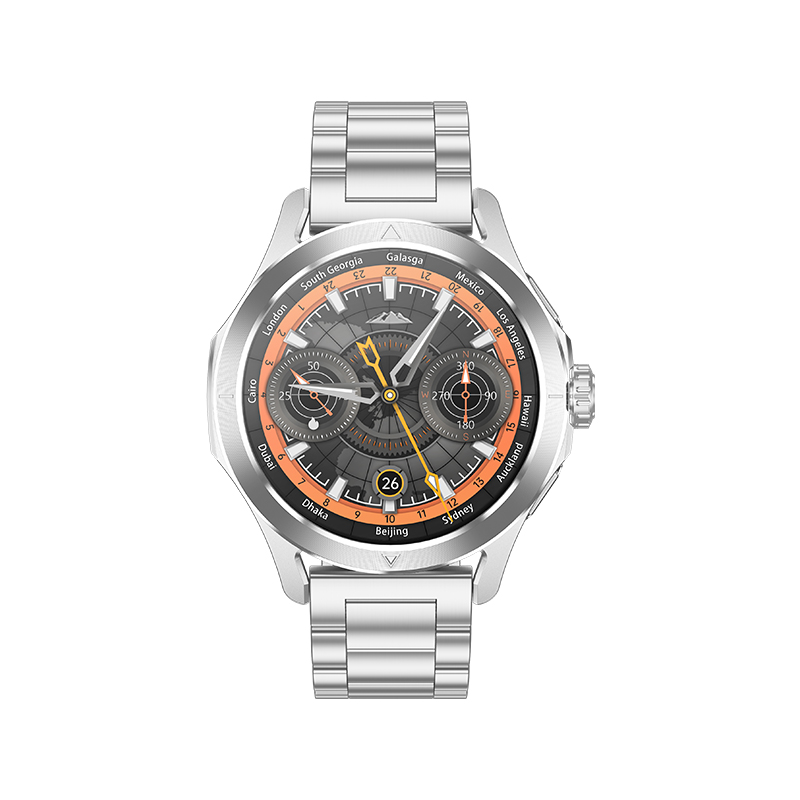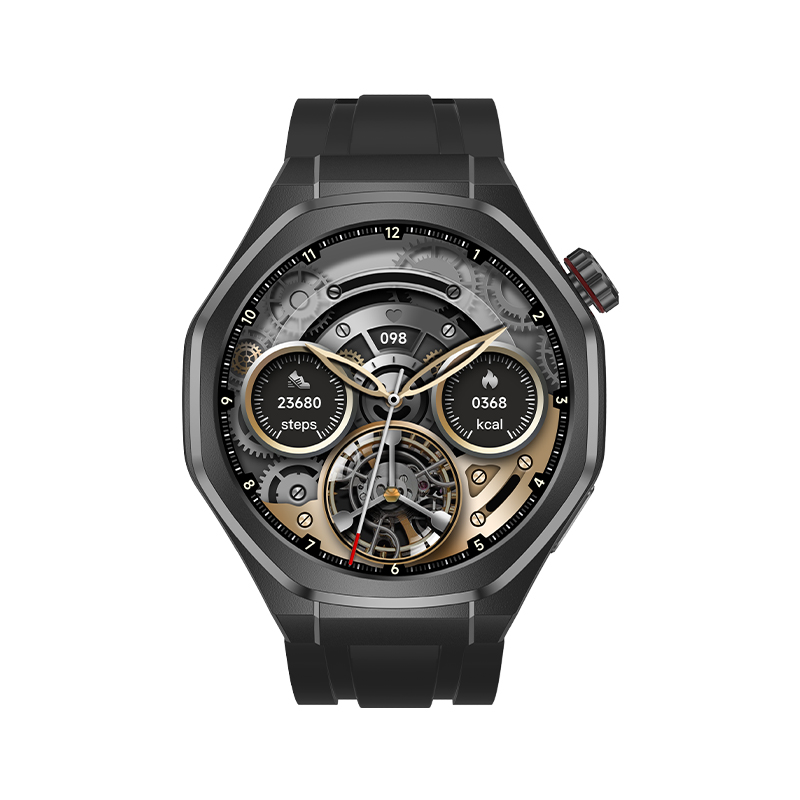What innovative sleep tracking features do smart bracelets offer to improve sleep quality?
Release Time : 2025-08-11
With increasing health awareness, more and more people are paying attention to their sleep quality. As convenient and practical wearable devices, smart bracelets not only record basic health data like steps and heart rate, but also offer many innovative sleep tracking features. These features not only help users better understand their sleep patterns but also provide scientific guidance on improving sleep quality.
1. Accurate Sleep Stage Analysis
Traditional sleep monitoring often only provides simple sleep duration statistics. Modern smart bracelets, however, use built-in high-precision sensors and advanced algorithms to accurately distinguish different sleep stages (such as light sleep, deep sleep, and REM sleep). For example, some high-end bracelets use PPG (photoplethysmography) technology to identify a user's sleep state by detecting changes in blood flow and combining it with accelerometer data for comprehensive analysis. This multi-dimensional monitoring approach not only improves data accuracy but also provides users with a comprehensive sleep report, helping them gain a more intuitive understanding of their sleep patterns.
2. Personalized Sleep Recommendations
Based on detailed sleep data analysis, smart bracelets can generate personalized sleep recommendations to help users optimize their sleep habits. For example, if the system detects a short period of deep sleep, it may suggest adjusting pre-bedtime activities, such as avoiding electronic devices or caffeinated beverages. If insufficient REM sleep is detected, it may recommend increasing daytime exercise or trying meditation and relaxation techniques. In addition, some bracelets allow users to set an "ideal sleep goal." If their actual sleep performance falls short of this goal, they will receive notifications and improvement suggestions.
3. Smart Wake-up
To ensure users wake up at the optimal time and avoid the discomfort of being jolted awake by an alarm, some smart bracelets feature a smart wake-up function. This function uses the bracelet's real-time monitoring of their sleep cycle to gently vibrate the user at a time close to the awake phase within a set timeframe. This allows users to naturally awaken from sleep and feel refreshed for the day ahead. To prevent missing important events, the bracelet also retains a traditional alarm function as a backup.
4. Environmental Perception and Optimization
In addition to monitoring internal changes in the body, some smart bracelets can also sense the impact of environmental factors on sleep. For example, they can measure room temperature, humidity, and even light intensity, and provide improvement suggestions based on these parameters. This information is very useful for those who are easily disturbed by external factors that disrupt their sleep. For example, if the room temperature is too high or too low, the bracelet may recommend adjusting the air conditioning settings; if the light is too bright, it may prompt closing the curtains or using an eye mask.
5. Breathing Training and Relaxation Exercises
Many smart bracelets have integrated specially designed breathing training and relaxation exercises to help users relieve stress and promote a better sleep experience. These programs typically include a series of guided breathing rhythms that users simply follow on-screen instructions. Research shows that regular, deep breathing can help lower heart rate and reduce anxiety, making it easier to enter a deep sleep state. In addition, some bracelets offer a white noise function to create a comfortable sleep atmosphere.
6. Continuous Tracking and Feedback
Unlike a one-time test, smart bracelets can continuously track a user's sleep trends over time and generate regular reports for their reference. This allows users to clearly see their sleep improvements over time, boosting their confidence in self-management. Furthermore, the bracelet can predict future sleep performance based on historical data, providing early warning of potential problems. For example, if sleep quality declines over several consecutive days, the system will issue a warning and suggest appropriate countermeasures.
In summary, the smart bracelet's many innovative sleep tracking features provide strong support for improving users' sleep quality. Whether it's precise sleep stage analysis, personalized sleep recommendations, smart wake-up functions, or environmental sensing and optimization measures, they all demonstrate the importance of technology in caring for human health.
1. Accurate Sleep Stage Analysis
Traditional sleep monitoring often only provides simple sleep duration statistics. Modern smart bracelets, however, use built-in high-precision sensors and advanced algorithms to accurately distinguish different sleep stages (such as light sleep, deep sleep, and REM sleep). For example, some high-end bracelets use PPG (photoplethysmography) technology to identify a user's sleep state by detecting changes in blood flow and combining it with accelerometer data for comprehensive analysis. This multi-dimensional monitoring approach not only improves data accuracy but also provides users with a comprehensive sleep report, helping them gain a more intuitive understanding of their sleep patterns.
2. Personalized Sleep Recommendations
Based on detailed sleep data analysis, smart bracelets can generate personalized sleep recommendations to help users optimize their sleep habits. For example, if the system detects a short period of deep sleep, it may suggest adjusting pre-bedtime activities, such as avoiding electronic devices or caffeinated beverages. If insufficient REM sleep is detected, it may recommend increasing daytime exercise or trying meditation and relaxation techniques. In addition, some bracelets allow users to set an "ideal sleep goal." If their actual sleep performance falls short of this goal, they will receive notifications and improvement suggestions.
3. Smart Wake-up
To ensure users wake up at the optimal time and avoid the discomfort of being jolted awake by an alarm, some smart bracelets feature a smart wake-up function. This function uses the bracelet's real-time monitoring of their sleep cycle to gently vibrate the user at a time close to the awake phase within a set timeframe. This allows users to naturally awaken from sleep and feel refreshed for the day ahead. To prevent missing important events, the bracelet also retains a traditional alarm function as a backup.
4. Environmental Perception and Optimization
In addition to monitoring internal changes in the body, some smart bracelets can also sense the impact of environmental factors on sleep. For example, they can measure room temperature, humidity, and even light intensity, and provide improvement suggestions based on these parameters. This information is very useful for those who are easily disturbed by external factors that disrupt their sleep. For example, if the room temperature is too high or too low, the bracelet may recommend adjusting the air conditioning settings; if the light is too bright, it may prompt closing the curtains or using an eye mask.
5. Breathing Training and Relaxation Exercises
Many smart bracelets have integrated specially designed breathing training and relaxation exercises to help users relieve stress and promote a better sleep experience. These programs typically include a series of guided breathing rhythms that users simply follow on-screen instructions. Research shows that regular, deep breathing can help lower heart rate and reduce anxiety, making it easier to enter a deep sleep state. In addition, some bracelets offer a white noise function to create a comfortable sleep atmosphere.
6. Continuous Tracking and Feedback
Unlike a one-time test, smart bracelets can continuously track a user's sleep trends over time and generate regular reports for their reference. This allows users to clearly see their sleep improvements over time, boosting their confidence in self-management. Furthermore, the bracelet can predict future sleep performance based on historical data, providing early warning of potential problems. For example, if sleep quality declines over several consecutive days, the system will issue a warning and suggest appropriate countermeasures.
In summary, the smart bracelet's many innovative sleep tracking features provide strong support for improving users' sleep quality. Whether it's precise sleep stage analysis, personalized sleep recommendations, smart wake-up functions, or environmental sensing and optimization measures, they all demonstrate the importance of technology in caring for human health.







